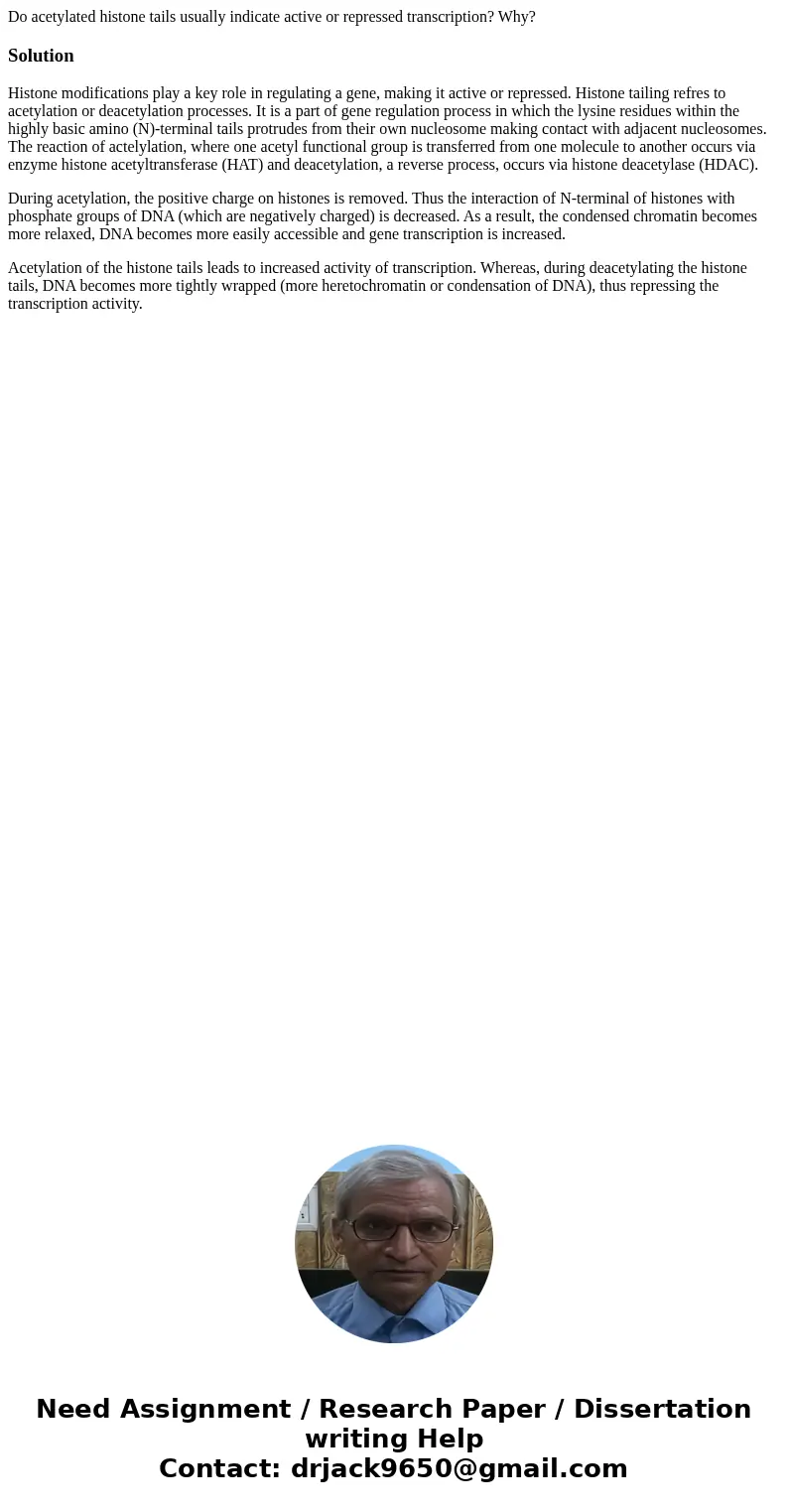Do acetylated histone tails usually indicate active or repre
Do acetylated histone tails usually indicate active or repressed transcription? Why?
Solution
Histone modifications play a key role in regulating a gene, making it active or repressed. Histone tailing refres to acetylation or deacetylation processes. It is a part of gene regulation process in which the lysine residues within the highly basic amino (N)-terminal tails protrudes from their own nucleosome making contact with adjacent nucleosomes. The reaction of actelylation, where one acetyl functional group is transferred from one molecule to another occurs via enzyme histone acetyltransferase (HAT) and deacetylation, a reverse process, occurs via histone deacetylase (HDAC).
During acetylation, the positive charge on histones is removed. Thus the interaction of N-terminal of histones with phosphate groups of DNA (which are negatively charged) is decreased. As a result, the condensed chromatin becomes more relaxed, DNA becomes more easily accessible and gene transcription is increased.
Acetylation of the histone tails leads to increased activity of transcription. Whereas, during deacetylating the histone tails, DNA becomes more tightly wrapped (more heretochromatin or condensation of DNA), thus repressing the transcription activity.

 Homework Sourse
Homework Sourse